Walking into the old part of Ngau Chi Wan Village, I’m soon on a path between two-storey buildings, which include a relatively grand old house, built in 1927 of grey bricks and mortar, with granite blocks around the doorway.
Standing here, it seems I could be in one of the far-flung, New Territories villages that are decades past their prime, with only few, elderly residents. But Ngau Chi Wan is in northeast Kowloon, making it a convenient place to live for people working in the city, and white-painted wooden boards partition the interior of this house into sub-divided flats.

Through an open door to a flat, I glimpse Chun Man, an infant boy fast asleep in his pram. “He’s one year old,” says his mother. “It’s his birthday today.”
Chances are, Chun Man will have no more birthdays here, as all residents of old Ngau Chi Wan are to be evicted soon, in readiness for most of the village being demolished, and replaced with new public housing blocks. It’s one of the last three east Kowloon villages, which are described by the government as “squatter areas” – and in 2019, then chief executive Carrie Lam announced plans for resuming plots of private land within them, to make way for public housing.
The Hong Kong Housing Society has been tasked with implementing these plans, and in spring 2023 released proposals for work commencing in August. I’m visiting with a small band of architects and others who are interested in Hong Kong history and heritage, who are keen to explore the villages, and perhaps encourage projects that preserve more of their character.
Along with discovering intriguing aspects of local history, the forays into the three villages result in questions about the development of the city overall. Notably: while Hong Kong has mostly developed as if in a pell-mell rush to wipe out the past, is this still the best way of creating the city? Or are there other, more imaginative options? Could each village be somehow retained, as more than just a name?
Aspirations for more than concrete jungle – and stubbornly surviving Ngau Chi Wan
Hours earlier, riding a bus towards Ngau Chi Wan, I passed a succession of characterless multi-storey blocks as typical of much of urban Hong Kong. Multitudes of people live and work in such areas, yet place names in northeast Kowloon indicate aspirations for something other than concrete jungle; on Google Maps, I notice Kingsford Terrace, Richland Gardens, Rhythm Garden, Sun Lai Garden, Oasis Kai Tak….
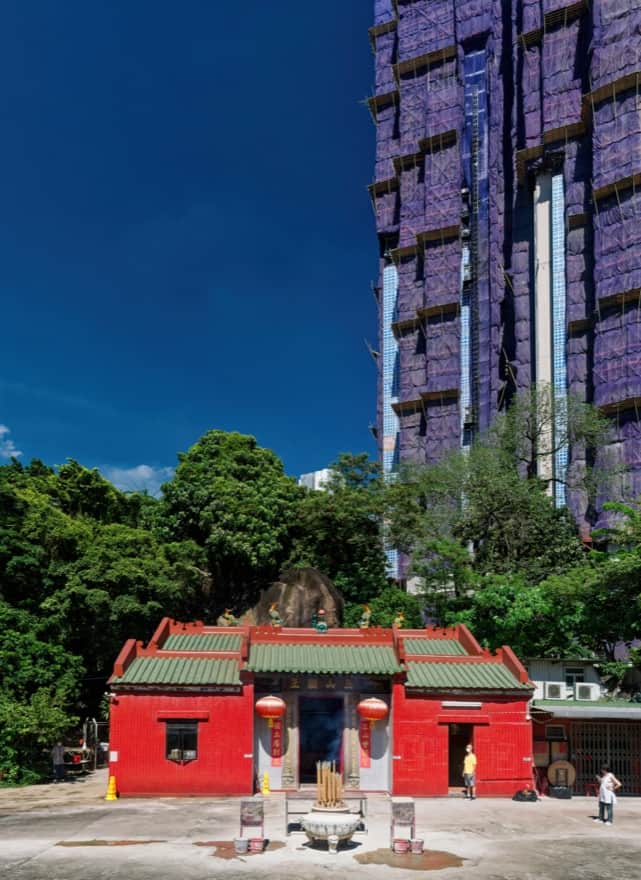
The short tour begins at Sam Shan Kwok Wong Temple, a squat building with bright red walls and a green tiled roof, dedicated to the “kings of three mountains”. Temple secretary and village chief Yu Chi-wai is our guide to Ngau Chi Wan, and explains there was formerly a Ngau Chi Wan region with several settlements, but only the village survives today. Behind the temple, trees around and atop a rock as big as a house recall the rural past, but a towering new apartment block beyond these reflects the surroundings increasing urbanisation.
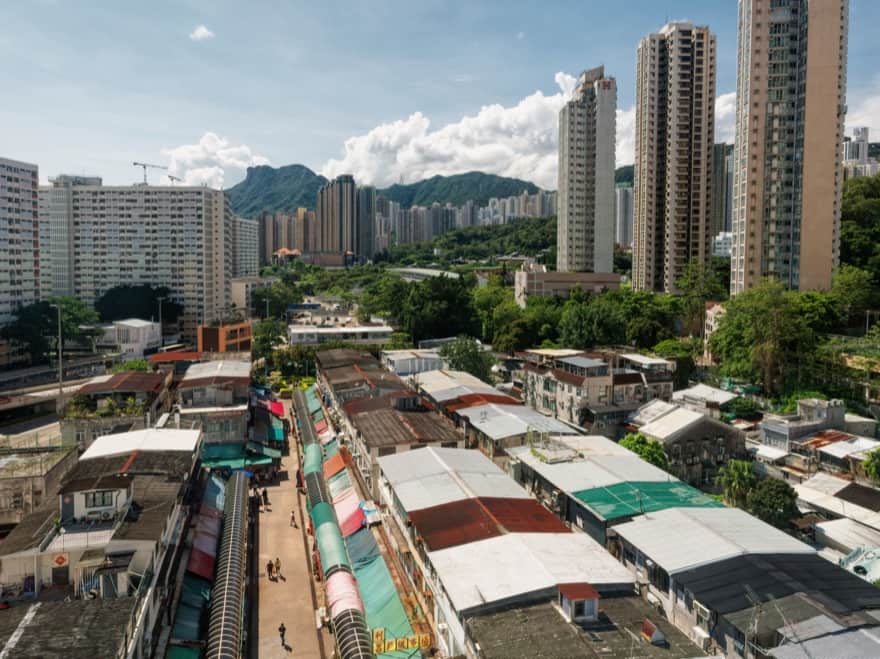
The village itself is around ten minutes’ walk away, and en route we take an elevator to a building stairwell, where a tiny window affords an overview of Ngau Chi Wan. A street leads through an open-air market, beside the low buildings of the old village. Beyond rises the distinctive profile of Lion Rock, the hill that lent its name to Hong Kongers’ can-do, “Lion Rock spirit”.
Yu escorts us briskly past the market, and into the village, which proves mostly dilapidated. Near the relatively grand house, grassy patches behind wire mesh fencing indicate where former buildings burned down but couldn’t be replaced due to restrictions on squatter houses.
Thanks to prior arrangement with a resident family, we pass through a gate and a passageway to a house with solid looking walls, small windows, a front door leading to a kitchen with metal pots atop a gas stove. The paint on the kitchen walls has become dull with time, and peeled away in places exposing dingy concrete. Fresher concrete has been smeared over cracks.
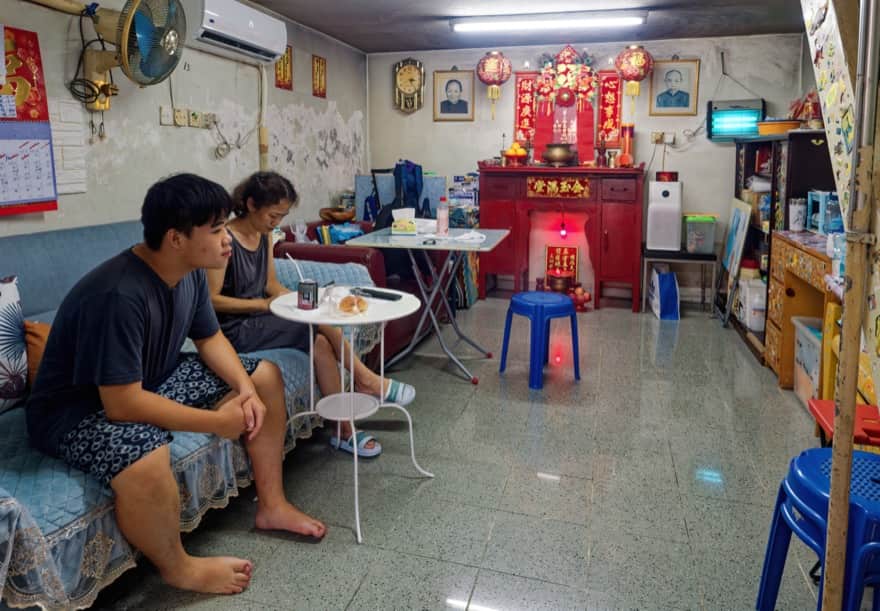
A door leads to a room where Oscar Ng Kwun-lok and his mother are relaxing on this Sunday afternoon. Though windowless, it’s airy and spacious compared to many a Kowloon home – with two sofas facing a tv atop a sideboard, beside which a steep ladder leads to upper floor bedrooms, as in traditional Hakka houses. “Oscar is 14, and he’s lived here all his life,” says his mother. “His father was a chef, but recently passed away.”
It turns out there are three related families living in three interconnected houses, sharing the communal kitchen. Ng belongs to the fourth generation of the Ng family living here, and says he would like to be a lawyer but has heard getting qualified is tough, so maybe he’ll try being an entrepreneur.
I ask about the building’s poor condition, and Ng’s mother says there have been threats of development for the past thirty or forty years, so no one was inclined to invest in long-term repairs. Only last year, the residents learned the developments plans had been more finalised, but despite community meetings now being held each week, she and Oscar don’t know where they will go once evicted.
Long-established village classed as a squatter area
Perhaps it seems odd that a long-established village with long-term residents can be classed as a squatter area. This evidently stems from a Housing Department survey of squatter areas in 1982, when expanses of shanty houses accommodated immigrants who had flooded into Hong Kong from China; yet the survey was 173 years after the first official record of Ngau Chi Wan, in Xin’an County Chronicle. Asked about the classification, the Lands Department replies by email: “Squatter structures with survey numbers from the 1982 Survey remain unauthorised in nature, but are ‘tolerated’ on a temporary basis,” and notes the squatter structures in Ngau Chi Wan and the two other east Kowloon villages are mostly on government land.
Yu takes us into a former school building that’s now the village headquarters. It’s about big enough for an indoor badminton court. Based on plans released so far, this building and the relatively grand house might be preserved while those around them are demolished. Not for the first time visiting the villages, I am reminded of China’s “nail houses”, the buildings remaining amidst rubble after defiant owners resisted evacuation orders.
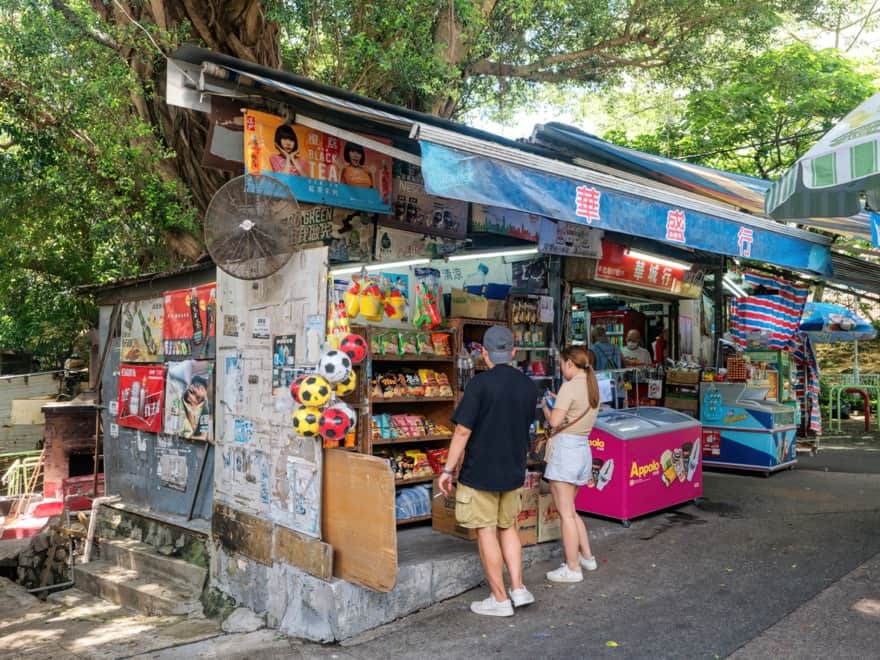
Further along, we pass a sitting out area amidst trees, across the street from a Taiwanese takeaway that proudly displays its Michelin listing. A shack sells packaged snacks, ice creams and chilled drinks in the shade of a banyan tree, which has a shrine at the base, festooned with miniature statutes of gods and warriors. Neighbouring old buildings host a basic barber’s shop, and the Po Fook café, which opened in 1964.
We peer through a locked gate, to view a two-storey building that’s evidently the last of the Ngau Chi Wan chai tong – akin to “nunneries” – that once accommodated retired single women from across Hong Kong, as detailed by historian Patrick Hase, in the Journal of the Royal Asiatic Society Hong Kong Branch.
On a wall by the banyan, a poster advertises a Chinese opera, which is among events held at the temple that attract current and former villagers, with audiences numbering perhaps 200 or more.
Yu returns to the temple, and tour participant Nicky Wong takes over the role as leader for a visit to Chuk Yuen – Bamboo Garden.
Nicky Wong, architect with a passion for local heritage
Wong is an architect with a passion for local heritage. “I’ve loved learning about Hong Kong history since secondary school,” he says. “I enjoyed looking at old pictures, such as with old colonial buildings. The photos didn’t show the Hong Kong I was familiar with.”
Wong began visiting historical places, and joined the Heritage and Conservation Committee of Hong Kong Institute of Architects, which led to opportunities to work on some conservation projects. He published a related website, and in 2017 he and wife Cherry set up a Facebook page, “香港探古 Hong Kong Heritage Exploration”, where in December 2020 he wrote the first published article on the former Sham Shui Po Service Reservoir at Bishop Hill.
The service reservoir was built in 1904, and demolition work had begun as it was no longer in use. Yet visits revealed remarkable architecture, imitating Roman civil engineering works, which Wong highlighted in posts on two successive days. “These posts attracted huge attention,” he says. “The demolition was stopped, and the underground reservoir has been preserved.”
After Carrie Lam’s announcement that the three east Kowloon villages would be developed, Wong began visiting them, talking with villagers, and checking for information in libraries, government records and online reports. He found the villages fascinating.
Chuk Yuen – kind of peaceful
“This way,” says Wong, as we arrive at Chuk Yuen, barely a stone’s throw east of Wong Tai Sin Temple. He leads our group along a path by fenced grassy areas, then between two closely spaced houses with sturdy brick walls. I linger to take photos in the narrow passage, which is dimly lit thanks to overhead paraphernalia such as wires, and pipes from air conditioners.
“What are you doing?” asks a young guy, who arrives from the street and is suspicious that an outsider is taking shots outside his home. I explain, and learn he is Kenrick Cheu Siu-fung, and lives in a house beside me.
Cheu’s mother comes out, and says this has been home to the family since Cheu’s grandfather settled here. She doesn’t want to move out, but hopes the government can protect their home. “We’re happy living here – it’s near the MTR so the transportation is very good, and it’s kind of peaceful.”
Days later, Cheu adds via Whatsapp, “We are completely reluctant to be forced to demolish the village by the government.”
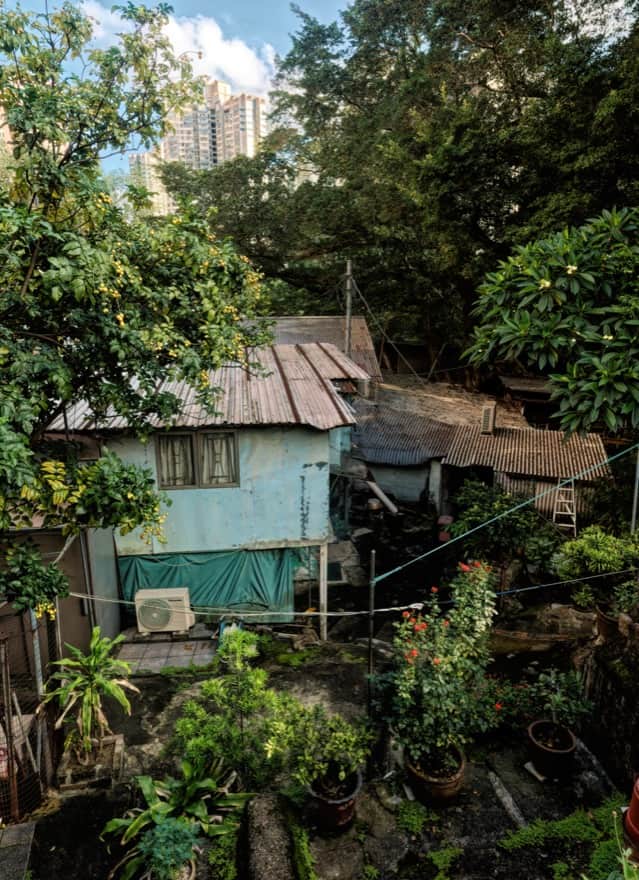
I catch up with Wong and the group, in a part of the village where the houses are more shanty style, with corrugated iron for walls as well as roofs. An open door reveals a fair-sized, comfortably furnished room. The buildings are shaded by leafy trees, and a small garden makes Chuk Yuen more akin to an oasis than any regimented garden.
Despite the name, there is no bamboo grove here. And, judging by an old map that Wong has found, more than half the former village has been swept away, replaced by a road and tower blocks.
Cha Kwo Ling: it seems the village will be destroyed
It turns out that the third village, which I visit with Wong and fellow heritage enthusiasts the following weekend, is more intact. Cha Kwo Ling is on the coast below hillsides southeast of the former Kai Tak Airport. It was formerly known as one of the “Four Hills” of Kowloon, where locals quarried granite, and fashioned it ready for construction.
Natalie Lam Yeuk-ngan, Freelance Assistant Project Manager with the Conservancy Association Centre for Heritage (CACHe) is our guide. “I’ve prepared a Powerpoint”, she says, indicating a tablet computer she holds. After checking we are connected via Zoom, we set of for a brisk tour of an “exhibition” that’s like an unofficial heritage trail she helped CAHCe create.
The first stop is the neat, white-painted St Mark’s Lutheran Church, where a pastor tells me the forthcoming development may be sad for Cha Kwo Ling but good for Hong Kong, before dashing off for an appointment.
It seems most buildings are one- or two-storey houses, with paintwork faded and discoloured to almost match the concrete that’s augmented by corrugated iron. Three women stand chatting in a lane, before heading to their homes.
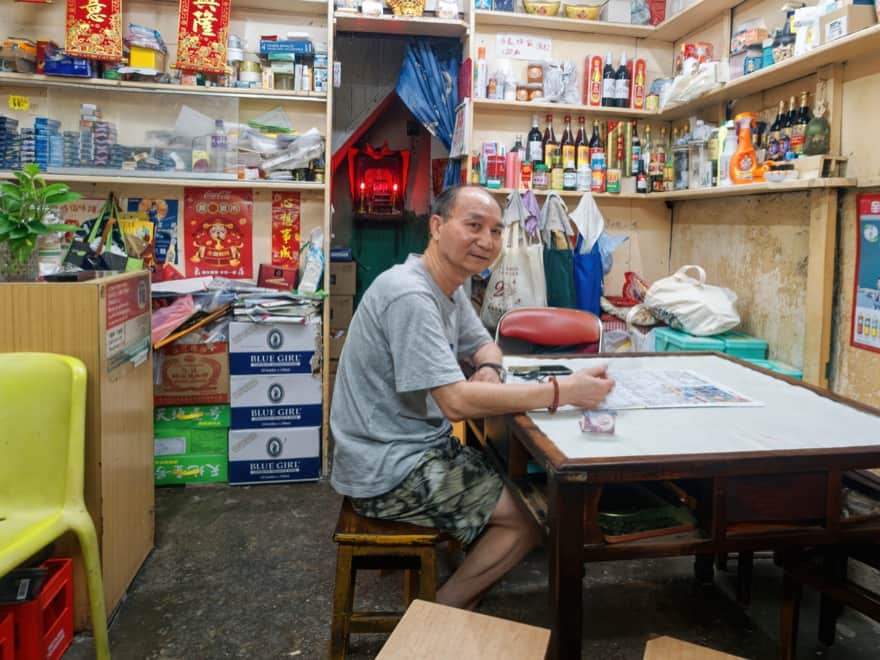
In a small store, proprietor Mr Lo Kwok-yeung is studiously marking a newspaper page listing horses that are about to race in Sha Tin. He tells me his father used to sell rice wine here, and indicates a set of antique looking measuring scoops on the wall, along with weighing scales blackened with age. “This building is over 100 years old,” he says.
Lo is 64 years old, and has been here all his life, mostly with his wife. For perhaps fifty years, the government has been suggesting development plans, yet nothing happened so far. The building is on government land, and as and when evicted the couple worry they will receive little compensation considering the monthly rent for government housing. “But if the village is protected and we can stay, we’ll be very happy,” says Lo. “There is some risk of fire, and typhoons, but it’s otherwise very cosy.”
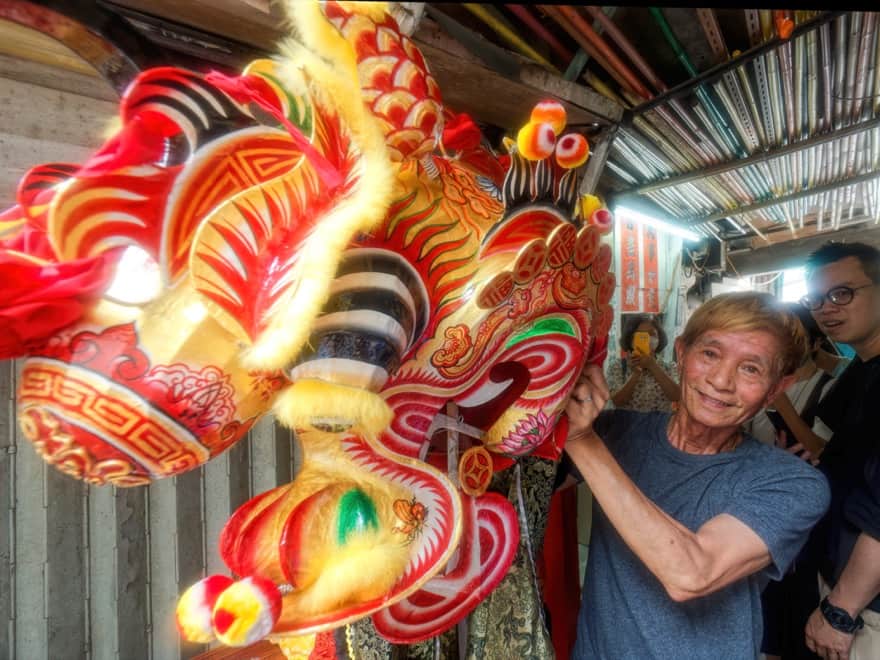
Further along, we meet another life-long resident of Cha Kwo Ling, Law Chun-sheung, who tells of celebrating Christmas with Catholic priests, and toughening up exercises for lion dancing. He fetches a lion dance costume, and proudly shows off the head with its elaborate paintwork.
In 1900, members of the Law family built one of Cha Kwo Ling’s largest houses, the Law Mansion. Though an appraisal noted “the appearance of the house is marred by a proliferation of cables, junction boxes, air conditioners and an ugly typhoon canopy of corrugated steel sheets”, the mansion is officially listed as a historic building, partly as it was built of local granite. By the door, as at several other buildings, a notice from Lands Department announces that the land here will revert to the government on 19 August 2023.
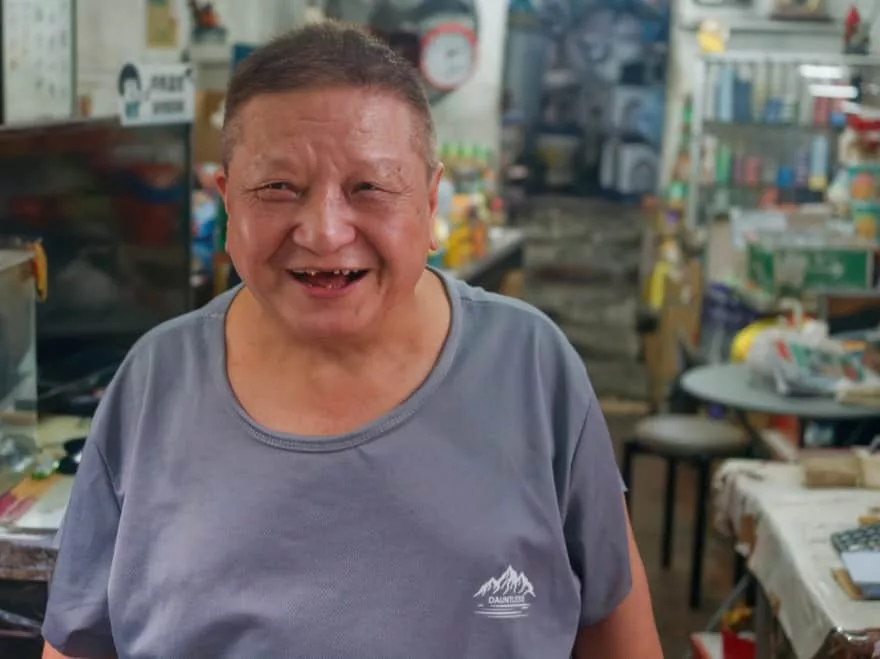
We pass a small café and a former teahouse, which is nowadays a store selling dishes like noodles. They’re still operating, each tended by a proud, elderly proprietor who has been here throughout his life.
Natalie Lam then escorts the group into a solid looking building that serves as the rural committee headquarters. Here, the committee vice chairman Chan Kwok-hon tells us that while residents don’t object to being classed as squatters who must be relocated, as conditions in Cha Kwo Ling are poor, there are uncertainties, such as whether they will be moved into transitional housing prior to more permanent apartments, and regarding any compensation for being uprooted. “We know nothing about the fate of the rural committee,” he says. “It seems the village will be destroyed.”
Plans released so far indicate Cha Kwo Ling village will indeed be obliterated. At most, five buildings might be preserved, including the Law Mansion, which in an artist’s impression of the development appears beside glass facades of new apartment blocks – a building out of time and out of place, even in its original setting.
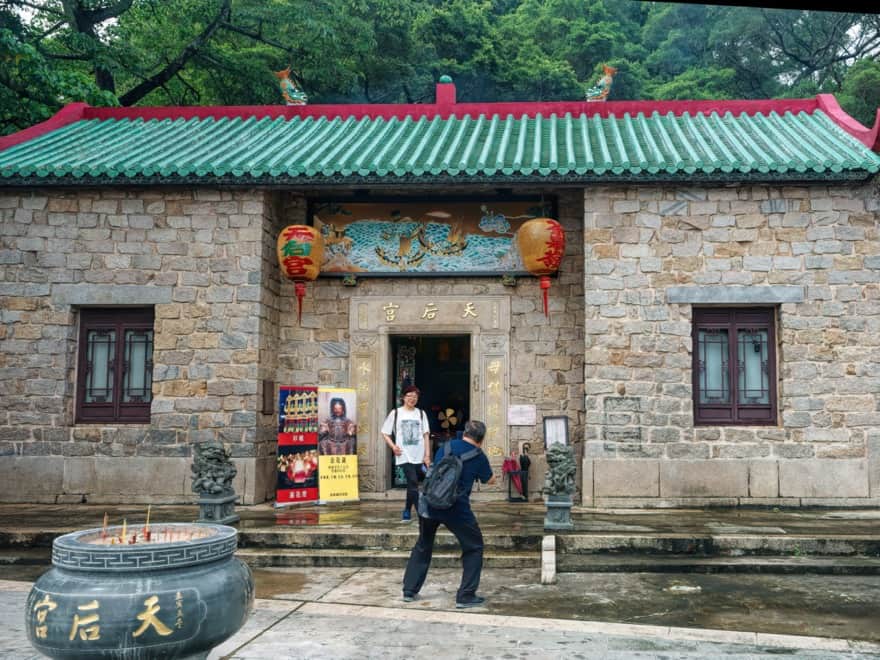
With Cha Kwo Ling’s only other listed historic building, the Tin Hau temple, surviving as it is outside the development area, the plans evidently follow the government’s view of Cha Kwo Ling’s heritage value. A heritage impact assessment by Aecom – as part of a package more focused on the development itself – included a site visit when the authors were more interested in folding metal gates than in buildings such as the Lo family’s hundred-year-old store.
Cha Kwo Ling granite used in Guangzhou cathedral and as far afield as San Francisco
The assessment mentions granite quarrying, but without indicating this was a significant industry in Hong Kong, with Cha Kwo Ling a key base of operations. I learn from an article by Ir Dr. Poon Sun-wah and Dr. Katherine Deng Ying of the University of Hong Kong that Hong Kong granite was exported to India, east China, Australia, Manila and even San Francisco, for constructing pavements, and grand buildings. In the 1890s, French bishops built the Sacred Heart Cathedral in Guangzhou, using granite from Ngau Tau Kok and Cha Kwo Ling. Locally, the former Legislative Council Building and Bank of China Building are made of granite from quarries at Cha Kwo Ling.
The quarry operations here were organised into a loose alliance with others from three nearby villages, dubbed the “Four Hills”, and employed Hakka stonemasons who were highly skilled at cutting and polishing granite. Quarrying dwindled after 1967, when the government banned the use of explosives. By then, over 90 metres of the original 150-metre tall Cha Kwo Ling hill had been removed, perhaps mostly as landfill for creating Kai Tak Airport.
A warehouse-like structure of granite blocks is a remnant of a related industry: mining kaolin, a form of clay that was washed, dried, and chiefly used for making tiles. According to the “Industrial History of Hong Kong” website, geologists discovered the kaolin in the 1920s, and mining began in 1933. The mine had a chequered history, employing up to 60 villagers in the 1950s, struggling in the face of overseas competition during the 1980s, and ending as the government terminated the lease in 1996, ready for development work.
While plans include a mining history interpretation centre, this looks small, disconnected from the mining and quarrying areas. Even as we are about to leave Cha Kwo Ling, one of the architects on the tour has sketched ideas for protecting more of the village, by shifting the planned apartment towers, and elevating at least one to allow space for some rebuilt and renovated buildings below it.
Other tour members likewise hope for innovative developments of the three villages, combining new housing with something of the original local character.
Homogenous residential towers in Hong Kong; conservation-led urban renewal projects elsewhere
Frankie Lui, who founded urban design company Atelier Global and is mainly based in Shenzhen, has an unusual insight regarding such redevelopment, as he grew up in a squatter area in present-day Kowloon Bay. While remembering, “The community was great! Neighbours took care of me while my mom was busy,” he has no qualms about the shanties being cleared decades ago. But for the villages, he hopes the government won’t follow usual practices.
“I don’t agree with what the government is doing right now, and has done for the past 20 years,” Frankie writes via Whatsapp. “They only put homogeneous efficient residential towers in virgin sites or sites with no historic context. Hong Kong had diverse neighbourhoods/villages/urban fabrics, yet nowadays you can hardly tell the difference between new housing districts.”
Bernard Brennan, an adjunct assistant professor in the Faculty of Architecture at Hong Kong University, joined the outing to Ngau Chi Wan and Chuk Yuen, and likewise hopes for something better than homogenous developments for the three villages. “Each of them was originally set out as a traditional village long before the British colonial period and still contains built fabric that has significant historic interest and rarity in the Hong Kong context,” he tells me via email. “I would be sceptical about the idea of retaining only one isolated building or some artifacts. It would be wonderful if more extensive parts of these places could be retained as part of an urban renewal strategy. There are many examples of such conservation-led urban renewal projects internationally and in China.”
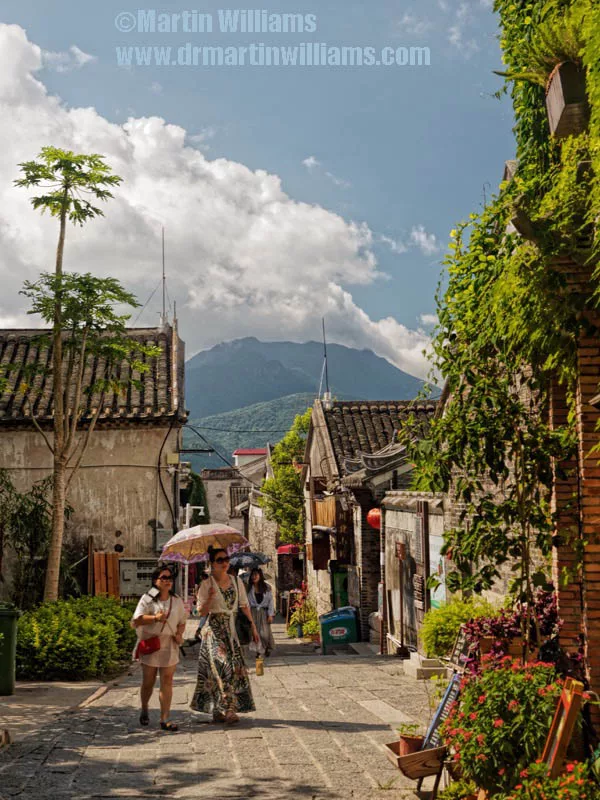
I’ve visited and been impressed by several such projects in mainland China; and after I mention Dapeng Ancient City in east Shenzhen to Frankie, he informs me of another revitalisation project even closer to Hong Kong – Nantou Ancient City, just 15km from Yuen Long. “I’ve found Shenzhen and other GBA cities treasure their own cities and are more open minded towards new ideas than Hong Kong,” he remarks.
Hopes for creative projects for all Hong Kong people
Leaving Cha Kwo Ling via Lam Tin MTR station, I notice sepia-tinted photos of the area in former decades – indicating nostalgia for the past, as if we’ve lost something special in the pell-mell rush for modernisation.
My visits to Ngau Chi Wan, Chuk Yuen and Cha Kwo Ling indicate potential for preserving more of the past than photos and token buildings and relics. Yet asked if open to ideas for preserving/rebuilding more of the three villages than currently planned, the Housing Society replies in an email that indicates the answer is “No”: “The Cha Kwo Ling village project has successfully navigated the statutory planning procedures… The remaining projects are set to follow similar procedures … HKHS will continue to maintain close communication with the Government and relevant authorities in regard to various planning issues including preservation of historic buildings.”
Even so, Wong still has some hope for creative projects that preserve old buildings together with new ones. “As architects, we have the expertise to do this, through dialogue with the Housing Society,” he says, noting that the projects would not be for all Hong Kong people. “But if a village is swept away, with just one house saved, there will simply be another housing estate, with no relation to how villagers lived, no history.”
Written for the South China Morning Post magazine
















